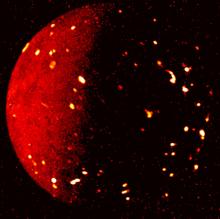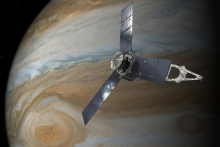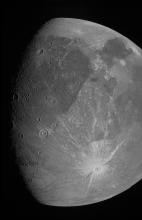Listen to today's episode of StarDate on the web the same day it airs in high-quality streaming audio without any extra ads or announcements. Choose a $8 one-month pass, or listen every day for a year for just $30.
You are here
More Jupiter
Whether it’s our own eyes, or just pictures of eyes, we always try to get the red out. And the planet Jupiter may be doing the same thing. Its giant red “eye” — the Great Red Spot — has been shrinking for decades. Eventually, it could disappear.
The spot is a giant storm. It towers about five miles above the surrounding clouds. The Sun’s ultraviolet light zaps chemical compounds at the top of the storm, turning them red. And the Juno spacecraft, which is orbiting Jupiter, found that the storm extends a couple of hundred miles down into the planet’s thick atmosphere.
The Great Red Spot has been around since at least 1831. It may also have been seen in the 1600s, although no one is sure if that sighting was the same feature. In the late 1800s, it was a wide oval that spanned at least three times Earth’s diameter. By the time the Voyager probes flew past Jupiter, the spot was about twice as wide as Earth. And today, it’s about one-and-a-third times Earth’s diameter.
That’s still huge. But the shrinking trend doesn’t seem to be slowing down. So one NASA scientist has speculated that the Great Red Spot could disappear in as little as a couple of decades — depriving Jupiter of its beautiful red “eye.”
And Jupiter is shining at its best right now. It’s low in the southeast at nightfall, and looks like a brilliant star. It slides across the south during the night, and sets at sunrise.
Script by Damond Benningfield






